
La Tanzanite: Un Tesoro Cromatica dal Cuore della Terra
Nel vasto e affascinante mondo delle gemme preziose, la **tanzanite** si è affermata negli ultimi anni come una delle pietre più ambite e apprezzate. Scoperta solamente nel 1967 ai piedi del Monte Kilimanjaro, in Tanzania, da cui prende il nome, questa gemma ha rapidamente conquistato il cuore di collezionisti e amanti della gioielleria grazie alle sue straordinarie caratteristiche cromatiche.
---Un Viaggio nella Storia della Tanzanite
La storia della tanzanite è relativamente recente e affascinante. Fu scoperta il 7 luglio 1967 da Manuel d'Souza, un sarto e cercatore di gemme, nelle colline di Merelani, vicino ad Arusha, in Tanzania. Inizialmente, scambiò queste pietre trasparenti blu per zaffiri. Tuttavia, la loro vera identità fu presto rivelata: gemmologi del GIA (Gemological Institute of America) e Ian McCloud, un geologo del governo tanzaniano, la identificarono come una nuova varietà di **zoisite**.
Prima della sua commercializzazione, si narra che i guerrieri Maasai della Tanzania fossero i primi a imbattersi in queste gemme. Secondo le loro leggende, un fulmine avrebbe incendiato le aride praterie, e al termine degli incendi, avrebbero trovato queste pietre blu scintillanti sparse sul terreno. Per la tribù Maasai, il colore blu è sacro e la tanzanite è considerata un dono divino. Ancora oggi, è tradizione che le madri Maasai ricevano tanzaniti dopo il parto, come simbolo di buona sorte, salute e lunga vita per il neonato e benedizione per la madre.
La sua ascesa alla fama mondiale si deve in gran parte a **Tiffany & Co.** Nel 1968, Henry Platt, allora presidente della celebre azienda di gioielli, ne rimase affascinato e decise di ribattezzarla "tanzanite", in onore del suo paese d'origine. Tiffany & Co. lanciò una massiccia campagna promozionale che la presentò al mondo come "la gemma blu più bella scoperta negli ultimi 2.000 anni", consolidandone rapidamente la reputazione e il desiderio sul mercato internazionale.
---L'Incanto Cromatico della Tanzanite
Ciò che rende la tanzanite unica è il suo **pleocroismo**, un fenomeno ottico che le permette di mostrare colori diversi a seconda dell'angolazione da cui la si osserva. Le sfumature spaziano dal blu zaffiro intenso al viola ametista, fino a tocchi di rosso borgogna, creando un vero e proprio spettacolo di colori. Questa peculiarità, unita alla sua rarità (la tanzanite si trova in un'unica miniera al mondo), ne ha accresciuto esponenzialmente il valore e il desiderio.
Tecnicamente, la tanzanite è una varietà del minerale zoisite, appartenente al gruppo dei silicati. La sua colorazione è dovuta principalmente alla presenza di piccole quantità di vanadio. Spesso, per esaltarne le tonalità blu e viola, la tanzanite viene sottoposta a un **trattamento termico**, un processo standard e accettato nel settore che ne migliora la bellezza intrinseca.
---I Tagli della Tanzanite: Esaltare la Bellezza
Come per ogni gemma, il taglio riveste un ruolo cruciale nell'esaltare la brillantezza e il gioco di colori della tanzanite. I maestri tagliatori studiano attentamente la forma e le inclusioni della pietra grezza per massimizzarne la resa estetica e il peso in **carati**.
Esistono numerosi tagli che si adattano alla tanzanite, ognuno con le sue peculiarità:
- **Taglio ovale:** Un classico che massimizza la superficie della gemma e ne esalta la lucentezza.
- **Taglio cuscino:** Ne esalta la sua eleganza regale, particolarmente adatta per anelli.
- **Taglio a goccia (o a pera):** Elegante e sofisticato, particolarmente adatto per ciondoli e orecchini.
- **Taglio rotondo brillante:** Sebbene meno comune per la tanzanite a causa della sua forma allungata naturale, offre la massima brillantezza.
- **Taglio a smeraldo:** Con le sue faccette rettangolari, mette in risalto la chiarezza e la profondità del colore.
- **Taglio a marquise:** Una forma allungata e affusolata che crea un effetto di maggiore dimensione.
Tuttavia, secondo la nostra esperienza e il nostro gusto, riteniamo che il taglio che le conferisce il massimo splendore sia il **taglio a cuscino**. Le sue curve morbide e le ampie faccette permettono alla luce di rifrangersi in maniera ottimale, esaltando appieno il pleocroismo e la profondità cromatica della tanzanite, conferendole un aspetto regale e un'eleganza senza tempo.
---Il Costo della Tanzanite: Variabili e Consigli
Determinare un prezzo preciso per la tanzanite è più complesso rispetto ai diamanti, poiché il suo valore dipende da una combinazione di fattori che possono influenzare significativamente il costo finale. Le variabili principali includono la **varietà cromatica** (le sfumature di blu e viola più intense e sature sono le più pregiate), il **taglio** (che ne esalta la brillantezza e il pleocroismo), e naturalmente la **caratura**. Come per tutte le gemme, una tanzanite di dimensioni maggiori sarà generalmente più costosa per carato.
Per questo motivo, il consiglio che ci sentiamo di dare è di richiedere sempre **preventivi chiari e dettagliati**, accompagnati possibilmente da **immagini in alta definizione** della gemma. Questo vi permetterà di valutare al meglio la qualità e il valore della tanzanite che desiderate acquistare.
---La Vostra Tanzanite Perfetta
Presso la nostra gioielleria, siamo fieri di offrire un'accurata selezione di tanzaniti naturali, disponibili in diverse carature e tagli. Siamo a vostra completa disposizione per guidarvi nella scelta della gemma perfetta, fornendo consulenze personalizzate e preventivi su misura.
Contattateci per la vostra Tanzanite Perfetta!
Siamo a vostra disposizione per qualsiasi domanda o per guidarvi nella scelta della tanzanite ideale. Non esitate a contattare Gioielleria Arte Orafa Olevano Romano:
Telefono/WhatsApp: 069562629
Email: info@gioiellioro.eu
Sito Web: www.gioiellioro.eu
Il nostro team di esperti sarà lieto di aiutarvi a trovare la Tanzanite dei vostri sogni.


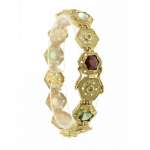
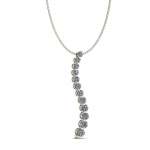

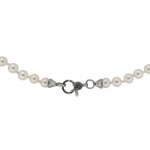

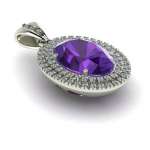

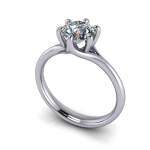

-150x150h.jpg)
-150x150h.jpg)


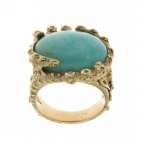

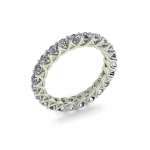
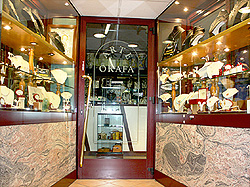 Gioielleria Arte Orafa da oltre 30 anni sul mercato dei gioielli artigianali e diamanti certificati GIA HRD IGI.
Gioielleria Arte Orafa da oltre 30 anni sul mercato dei gioielli artigianali e diamanti certificati GIA HRD IGI.

Leave a Comment